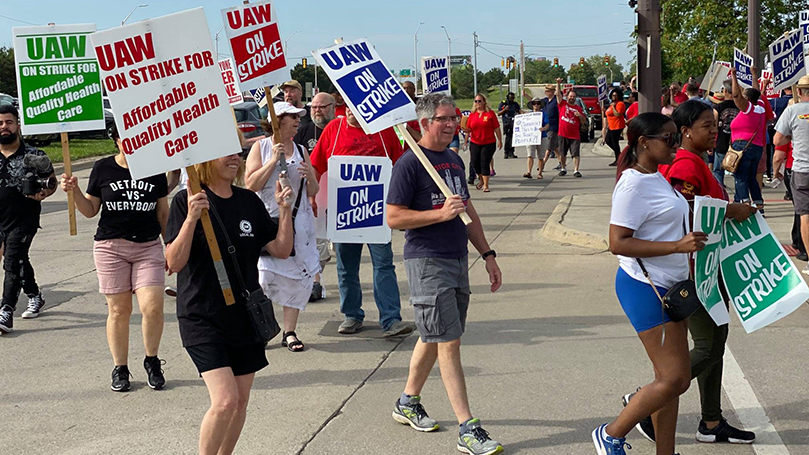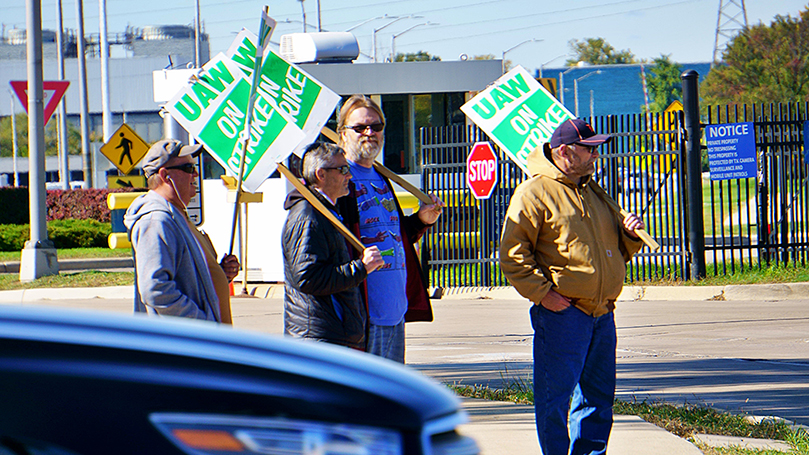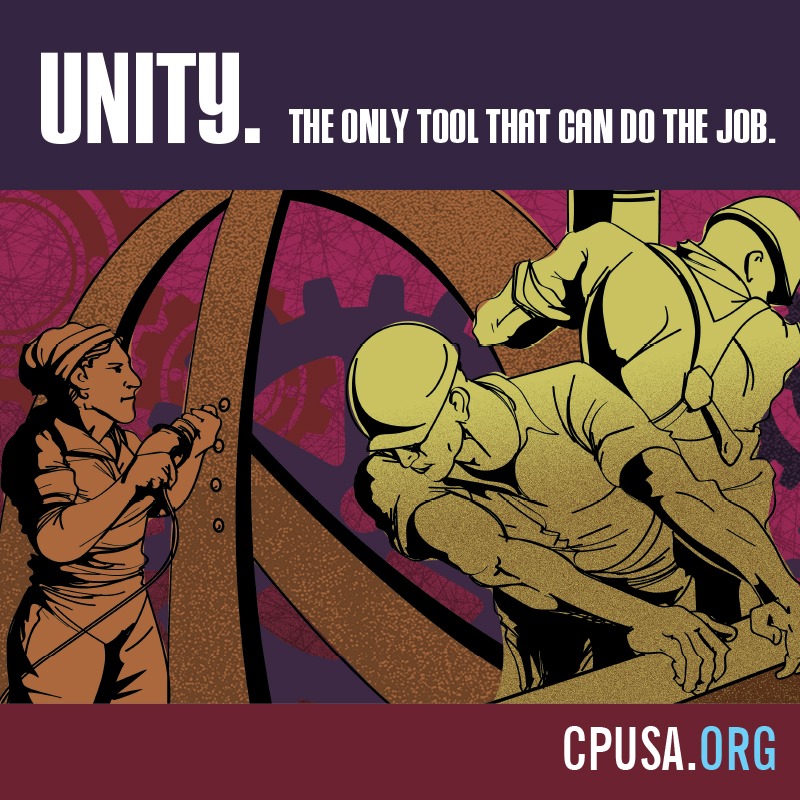
Change sometimes occurs so quickly that it’s hard to keep up. What once was is no longer; life is stood on its head, and what seemed impossible is suddenly within grasp. Is the country now in such a moment? And if so, how is such progress gauged?
One measure might be big shifts in mass attitudes as reflected in public opinion polls, another the frequency of protests, and a third the quality and character of various forms of struggle. Take strike actions, for example: last year 485,000 workers went out on strike, the highest number since the 1970s.
This year the trend has continued: workplace and strike actions are taking place all over the country. Witness the struggles of Unite HERE to organize workers at Marriott, the Amazon workers who went on strike against Jeff Bezos, the 50,000 who walked the UAW’s picket lines against GM, the strike of Mack Truck workers against Volvo, the janitors who went out against Aramark, the United Steelworkers’ strike in Arizona against ASARCO, and now the strike of Chicago teachers. Clearly there’s a new level of class struggle militancy and activism at work. Not only are workers going out on strike, but they are also increasingly confident they can win.
Is the country in the middle of a strike wave?
Do the quantity and quality of these strikes merit calling them a strike wave? Something new clearly is occurring, and it’s important to not only take note of it but also give these strikes every support whenever possible.
The month-long strike of the UAW against GM was of particular importance—it set the stage not only for GM but also for upcoming contract talks with Chrysler and Ford. A key issue was winning temporary workers permanent status and the elimination of the two-tier wage. While there were many positives in the proposed new contract, the union’s inability to compel the reopening of the Lordstown Assembly plant was a negative. Workers are now voting on whether to accept the proposed agreement.

Strike actions are unique moments. Workers can draw more basic conclusions about the nature of capitalism in times like this. Class and socialist consciousness can grow. In addition, the UAW’s ability to settle the strike on favorable terms is likely to have a big impact on the upcoming elections, considering that many auto workers live and work in swing states. The fact that GM was bailed out and made record profits was not lost on the striking workers: The issue now is will they draw anti- or pro-Trump conclusions, and to what degree?
Important developments are also occurring among other sections of the population. Here mention must be made of the recent environment protests involving hundreds of thousands of high school students and their families who participated in the Youth Climate Strike.
There are also changes in thought patterns among large sections of unorganized workers. One indication of this is the growing disillusion with the Trump administration as reflected in opinion polls, particularly among white women with high school diplomas. An ABC poll in September shows Trump’s support in this demographic dropping by 12 points to 42%.
This trend was evident during the 2018 midterms but continued over the summer as Trump stepped up his racist and anti-immigrant attacks. At the same time, concerns over issues like preexisting conditions and prescription drugs are pushing these women away from Trump and GOP positions.
This anxiety has only increased with the scandals around Ukraine, Turkey, and Syria. It seems that in the last few weeks a new political moment has emerged in the country. New majorities now support both an impeachment inquiry and also the actual impeachment of the president. The country is roughly split on whether Trump should be removed from office.
This is an extremely important development. The corruption so evident in Trump and Giuliani’s quid pro quo with Ukraine and the green light given to Turkey’s invasion of Syria against the Kurds has laid the basis for a new tipping point. For the first time some of Trump’s Republican lackeys in Congress have expressed reservations.
Cracks are also appearing in other areas of the Trump coalition, including mass media outlets like Murdoch’s Wall Street Journal and Fox News.
Impeachment is being belittled by some who should know better.
In this regard, while support for impeachment is generally growing, it’s beyond curious that some of our friends have begun now to belittle the process, making the odd claim that it will not advance working-class interests.
It’s a curious argument because, by all accounts, including by those making this argument, the Trump administration has been systematically dismantling federal regulations and rules that benefit working people. It would seem logical that bringing the administration to account in Congress and exposing the corruption, double-dealing, and illegal activities would go a long way toward opening the eyes of the U.S. public and help lay the basis both for Trump’s removal from office and the GOP’s defeat in next year’s election. Thus, rather than a diversion from working-class interests, impeachment is the key to redressing such interests.
Indeed, it’s vital to keep the pressure on. This in no way contradicts the fight around climate change, strike support, health care, or any other issue. In fact, to be most effective, the demand for impeachment must come from the very forces concerned with these issues. Clearly, it cannot be left to the politicians alone.

Some are arguing that Trump’s refusal to cooperate with the impeachment inquiry has led to a constitutional crisis. Whether this is true remains unclear—what is clear is that ongoing pressure in favor of impeachment can widen the already existing cracks in Trump’s support and could, depending on new revelations and how they are handled, have an impact on the level of Trump’s Senate support in the upcoming trial. While conviction today seems very unlikely, who knows what might happen tomorrow? With big shifts in public opinion at work, along with growing instability, anything is possible. This includes ending the GOP’s grip on the Senate, once viewed as impossible but now possibly in play.
While the future is hard to predict, the only thing that is certain is that struggle alone will determine a positive outcome. The initiative will be in the hands of those who act with the unity and best interests of the working class and people at heart. The line of march is clear—it leads from the picket lines to the halls of Congress and to the ballot box in November.


 Join Now
Join Now